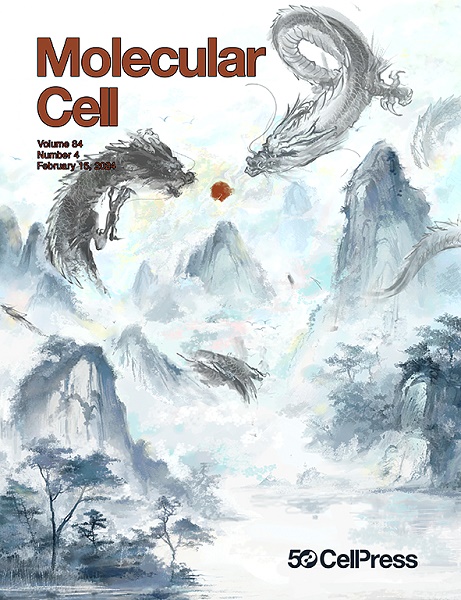MLKL activates the cGAS-STING pathway by releasing mitochondrial DNA upon necroptosis induction
IF 14.5
1区 生物学
Q1 BIOCHEMISTRY & MOLECULAR BIOLOGY
引用次数: 0
Abstract
Necroptosis is a pro-inflammatory, lytic cell death executed by a pseudokinase mixed lineage kinase-like protein MLKL. Upon necroptosis induction by various inflammatory signals, MLKL is phosphorylated by receptor-interacting serine/threonine-protein kinase 3 (RIPK3) and translocates from the cytosol to the plasma membrane, causing membrane disruption and the release of damage-associated molecular patterns (DAMPs). We report here that phosphor-MLKL also translocates to mitochondria and induces a microtubule-dependent release of mitochondrial DNA (mtDNA). The released mtDNA activates the cGAS-STING (cyclic GMP-AMP synthase-stimulator of interferon genes) pathway, resulting in the upregulation of interferon-beta (Ifnb) expression. In a necroptosis-mediated inflammatory bowel disease (IBD) mouse model, interfering with the cGAS-STING pathway reduced inflammation and promoted intestinal recovery. Thus, MLKL induces inflammation not only in a cell non-autonomous fashion by releasing DAMP signals, but also in a cell-autonomous manner by causing mtDNA leakage into the cytosol, thereby activating the cGAS-STING pathway.

MLKL在诱导坏死下垂时通过释放线粒体DNA激活cGAS-STING通路
坏死坏死是一种由伪激酶混合谱系激酶样蛋白MLKL引起的促炎性溶解性细胞死亡。在各种炎症信号诱导下,MLKL被受体相互作用的丝氨酸/苏氨酸蛋白激酶3 (RIPK3)磷酸化,并从细胞质溶胶转运到质膜,导致膜破坏和释放损伤相关分子模式(DAMPs)。我们在这里报道,磷酸化mlkl也易位到线粒体并诱导线粒体DNA (mtDNA)的微管依赖性释放。释放的mtDNA激活cGAS-STING (cyclic GMP-AMP synthase-stimulator of interferon genes)通路,导致干扰素β (Ifnb)表达上调。在坏死介导的炎症性肠病(IBD)小鼠模型中,干扰cGAS-STING通路可减少炎症并促进肠道恢复。因此,MLKL不仅通过释放DAMP信号以细胞非自主方式诱导炎症,而且还以细胞自主方式引起mtDNA渗漏到细胞质中,从而激活cGAS-STING途径。
本文章由计算机程序翻译,如有差异,请以英文原文为准。
求助全文
约1分钟内获得全文
求助全文
来源期刊

Molecular Cell
生物-生化与分子生物学
CiteScore
26.00
自引率
3.80%
发文量
389
审稿时长
1 months
期刊介绍:
Molecular Cell is a companion to Cell, the leading journal of biology and the highest-impact journal in the world. Launched in December 1997 and published monthly. Molecular Cell is dedicated to publishing cutting-edge research in molecular biology, focusing on fundamental cellular processes. The journal encompasses a wide range of topics, including DNA replication, recombination, and repair; Chromatin biology and genome organization; Transcription; RNA processing and decay; Non-coding RNA function; Translation; Protein folding, modification, and quality control; Signal transduction pathways; Cell cycle and checkpoints; Cell death; Autophagy; Metabolism.
 求助内容:
求助内容: 应助结果提醒方式:
应助结果提醒方式:


